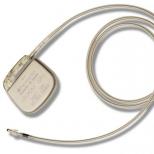How to decode an ECG yourself?
Electrocardiography is the oldest and most proven method for assessing cardiac activity, which may be why many patients mistakenly believe that it is not difficult to decipher an electrocardiogram on their own. However, the results of the study are so variable and dependent on the individual characteristics of the patient that only a specialist can correctly interpret. For an ordinary person, a cardiogram is a set of teeth and lines, but in fact, you need to look at every stroke, since they all have their own meaning.
Carrying out electrocardiography
Patients wondering how to decipher the cardiogram of the heart may not trust their doctor or are simply inquisitive. And, although a cardiologist will not work out of a person without a medical education, you can get acquainted with the principles of electrocardiography and learn how to correctly understand the ECG findings.
Why are there so many lines on the ECG and what do they mean?
The electrocardiograph, as you know, registers the electrical potentials of the heart that occur during its contraction. If you count the number of curves on the ECG sheet, you get twelve. All of them show the passage of electrical impulses in different parts of the heart. Each curve is labeled as I, II, III, aVR, aVL, aVF, V1 and V2, V3, V4, V5, V6. Many patients, looking at the ECG decoding guide, get scared even at this stage, but there is nothing complicated here. Each lead corresponds to one region of the heart. The first - the anterior wall of the heart, the second - the anterior and posterior walls at the same time, the third - the posterior wall, aVR - the right lateral surface, aVL - the left anterior-lateral wall, aVF the postero-inferior wall, V1 and V2 - the right ventricle, V3 - the septum between ventricles, V4 - the apex of the heart, V5 the anterior-lateral wall of the left ventricle, V6 the lateral wall of the left ventricle.
Therefore, if a deviation from the norm in lead V1 is recorded on the electrocardiographic tape, it will be possible to think that the pathology is localized in the right ventricle. Such a number of leads is necessary to determine the exact location of "malfunctions" in the work of the heart.
Teeth, segments, intervals and their interpretations

ECG consists of several teeth, intervals and segments
Each lead is a curved line with teeth and indentations. The teeth are called bulges that are directed down or up, that is, these are all deviations from a straight line. Each tooth is indicated by Latin letters, and there are six of them in total. The first is the P wave, similar to a tubercle, it reflects the work of the atria. It is followed by the QRS complex, the highest peak on the ECG line, and is usually drawn by children, depicting the line of the heart. QRS illustrates the work of the ventricles. The mound that comes after the QRS is a T wave, reflecting how the myocardium recovers after contraction (that is, after a heartbeat).
Segments are the distances between the teeth. Doctors measure them with a ruler or directly on graph paper, although particularly experienced cardiologists notice segment shortening or lengthening at a glance. Changes in the length of the S-T and P-Q intervals are considered especially important. There are also intervals - segments on the cardiographic line, including both a wave and a segment, for example, Q-T intervals.
How is an ECG decoded?
In order to correctly understand the results of an ECG, practice is needed in comparing different types of cardiograms. It is impossible to determine exactly how long it takes the average person to acquire the skill of transcribing an ECG at home. Success in this, at first glance, an easy matter, is achieved by practice and the presence of extensive medical knowledge. Since it is necessary to look not only at electrocardiographic nuances: intervals, segments, teeth, but also various combinations of these components, which may indicate a specific disease.
The doctor begins to look at the cardiogram by determining the heart rhythm. The distances between the R waves should be the same, if they are different, then this indicates an arrhythmia. Then the heart rate is calculated by counting millimeter cells between the same R waves. Calculating the frequency is easy, knowing the ECG recording speed. We all know that the heart rate normally ranges from 60 to 90 beats per minute (depending on gender, age, physical fitness). Too fast heartbeat can indicate tachycardia, and slowing of the rhythm can indicate bradycardia.
Another indicator that needs to be looked at in the conclusion to the ECG is the electrical axis of the heart (EOS). The correct position of the electrical axis is normally not deviated, which means that in a healthy full person the axis occupies a horizontal position, in a thin person it is vertical, and only with heart disease does it deviate to the right or left. The electrical axis determines the position of the heart in the space of the chest.

Horizontal position of the electrical axis of the heart
The specialist is forced to look at all the components of the ECG: teeth, segments, intervals. A set of incomprehensible numbers and Latin letters on the cardiogram means how many seconds each of them lasts. Some doctors write them by hand, but modern electrocardiographs measure this automatically.
Is it possible to learn to "read" an ECG without being a doctor?
Human possibilities are endless, which means that you can learn anything. Of course, the skill of correctly deciphering the results of an ECG in modern life will not be superfluous, because we and our relatives are given an ECG at least once a year. However, you need to be prepared to spend more than one hour and more than one week behind textbooks, memorizing the signs of tooth changes, and watching a large number of cardiograms for various heart diseases. Perhaps, having acquired a basic knowledge of the basics of electrocardiography, you should stop and leave the rest to the doctors.





